Recipe:
Hook: TMC 200R size 6 or 8, or similar
Thread: UNI-Thread 6/0 chartreuse, olive or brown
Tail and wing: Elk or coastal deer hair
Body dubbing: Olive or rusty brown coarse dubbing (seal's fur)
Hackle: Natural grizzly or dyed olive
Step by step
Layer the hook with thread (apply wax to the thread as you need it for the hair and dubbing} and then cut a pinch of hair, cut it to size then tie it in. When wrapping deer or elk hair start with tight wraps, then soft wraps, then finish with tight wraps. Do this to control the flair. Flair is useful but can be a pain.
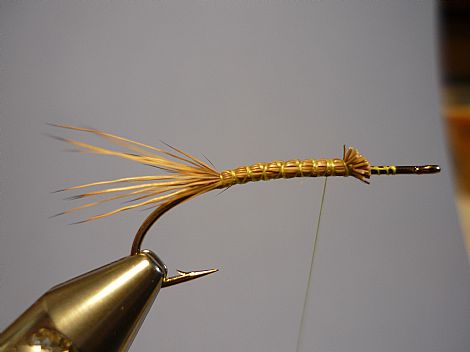
 Apply dubbing to the thread and then wrap it over half of the body. You wax the length of thread required for the dubbing.
Apply dubbing to the thread and then wrap it over half of the body. You wax the length of thread required for the dubbing.
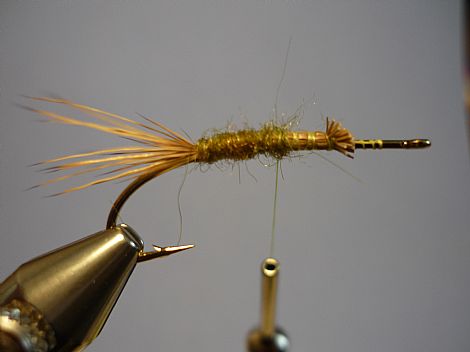
 Cut another pinch of hair to length and tie it in as before and cover it with the same dubbing.
Cut another pinch of hair to length and tie it in as before and cover it with the same dubbing.
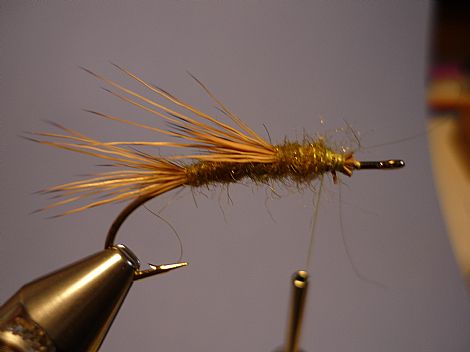
When you cut the deer or elk hair to length before tying in it gets rid of the problem of the flairing hair to the front of the thread. Then as you wrap towards the tail, you hang on to the hair until you complete the tie in. This keeps it from spinning around the hook.
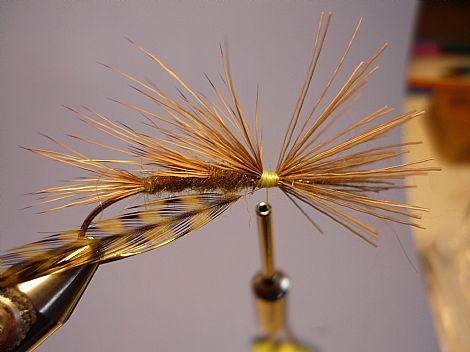
 Select another pinch of hair, do not cut it and tie it in full length. Create a bit of a platform to seat the hackle. Leaving the hair flull length makes it easier to wrap the hackle and allows you to cut it off to make a neat head. The hackle and hair head is essential to wake the fly when you fish it.
Select another pinch of hair, do not cut it and tie it in full length. Create a bit of a platform to seat the hackle. Leaving the hair flull length makes it easier to wrap the hackle and allows you to cut it off to make a neat head. The hackle and hair head is essential to wake the fly when you fish it.
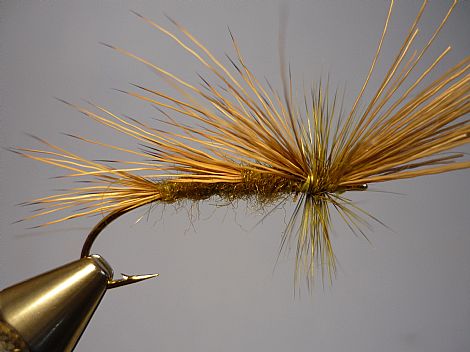
 Wrap the Hackle and tie it off on the hair. Then lift the hair and advance the thread with wraps under the hair to the eye and then whip finish and then tie off.
Wrap the Hackle and tie it off on the hair. Then lift the hair and advance the thread with wraps under the hair to the eye and then whip finish and then tie off.
Tied by Wally Nowak
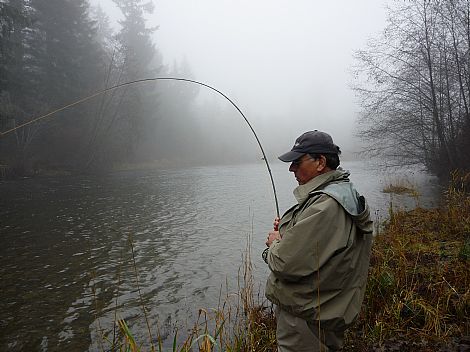
This is an excellent dry fly in mid June on the interior lakes of BC. It matches the sedge hatches which occur at this time. When the late season hatches occur it again comes into play.
One fishes it dry and with slight twitches and pauses to mimic the naturals. I encourage anglers in other parts of Canada to try it and let me know how it works.